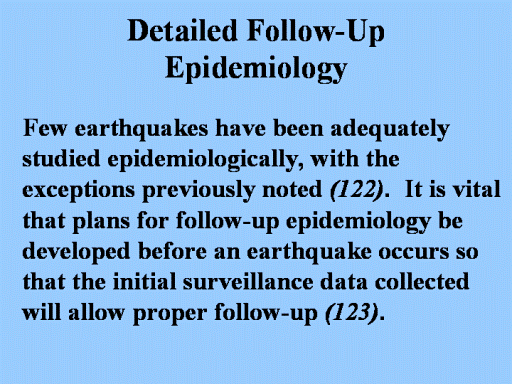Disaster-response officials
must be convinced to invest time and resources in the initial
surveillance effort, even though their attention is likely to be
focused on emergency medical services and disaster relief (124).
Without this investment, the opportunity to learn many
lessons useful for future earthquakes may be lost (125).
Again, it is important to recognize that earthquakes will
recur and that lessons learned during the surveillance effort
following a particular earthquake can help save lives during later
earthquakes.
